Turbines erected in the 1970s and 1980s may have been perched on lattice towers, a design that can scale to 200 ft and more. However, for the protection of the techs who must climb the towers, it make more sense to build them from rolled steel. These protect the technician in long climbs, and better yet, provide a structure that allows installing a service lift. What’s more, the quest for stronger wind will put more recent turbines on taller towers, 100 m and more, and that will require rethinking the design.
Taller towers for wind turbines make sense. For instance, an 80-m tower can let 2 to 3-MW wind turbines produce more power, and enough to justify the additional cost of 20-m more, than if installed at 60 m. Taller towers will also let larger turbines enter the market. Taller towers allow putting turbines in less turbulent winds, thereby decreasing wear and fatigue.
As OEM designers configure taller conventional towers, their limitations become obvious. Tower designers are increasingly interested in:
• Reducing their cost because the tower cost portion of the overall wind turbine is increasing from 10% to 20% of system cost.
• Cutting tower transportation costs.
• The interaction between tower and turbine
• Focused on reducing weight
Several tower designs have been proposed for 100m and more. One uses prestressed, reinforced concrete in pyramidal sections cast. Conventional 80 to 100m towers could be placed atop the 31m tall concrete foundation for hub heights 111 to 131m. The wider than conventional base also allows using less concrete and rebar in the foundation. Hence, lower costs there too.
Another developer has shown detailed plans for tapered modular towers. The company says a continuous taper, or an increasing taper, is the most efficient way to handle wind-turbine loads. One design, for example, uses field-assembled steel panels to eliminate transportation restrictions. Shipping tower panels instead of assembled towers allows lower loads and lower load heights, which lead to shorter less restrictive routes, and hence, lower transport costs. Adding tower panels allows increasing tower diameters and heights.
Filed Under: Construction, Towers

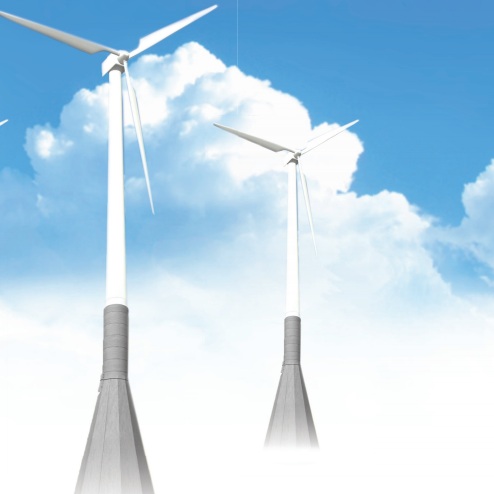
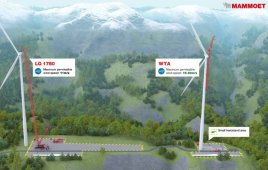
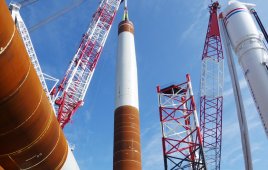
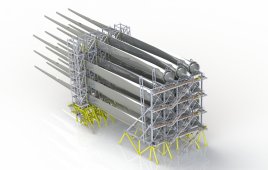
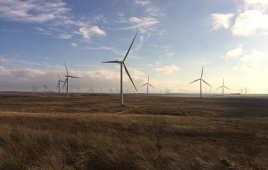
Why does a turbine have to be on top of the tower? Is It not possible to gear down with rods, belts or chains etc. from the blades at the top to the turbine on the ground?